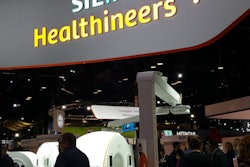Dear AuntMinnieEurope Member,
The prospect of a dog in an MRI scanner designed for humans is disturbing for many people, both from an ethical and a hygienic viewpoint. But a new study from Switzerland suggests that in terms of cross-contamination, men with beards represent a far greater source of concern.
Researchers found that bearded men harbor significantly more microbes and bacterial human-pathogenic strains than dogs, although the authors freely admit their study has limitations. Go to the MRI Community, or click here.
In a second MRI story, artificial intelligence (AI) is proving to be a useful way to avoid the costly errors that occur during manual entry of billing codes. At the annual meeting of the International Society for Magnetic Resonance in Medicine, a German team showed how a machine-learning algorithm can predict -- with over 97% accuracy -- the correct billing codes from an MRI exam based just on reviewing the study's log data. Click here to learn more.
Another German group discovered that an AI algorithm can accurately differentiate between benign and malignant breast lesions found on breast conebeam CT studies. The machine-learning method could potentially improve the real-world performance of radiologists reading these exams. Click here for our report.
Meanwhile, researchers from Imperial College London have analyzed two RIS/PACS networks and found that a significant percentage of reporting time for chest x-rays was spent on tasks not directly related to image interpretation. They concluded that optimizing RIS/PACS technology with an emphasis on efficient radiology reporting could help deal with reporting backlogs. Visit the Imaging Informatics Community, or click here.
European Radiology Experimental is still the new kid on the block, but the journal is generating considerable interest. It's just published Italian-led research about a technique that can use augmented reality instead of conventional intraprocedural imaging to guide needle insertion for interventional procedures. Find out more in the Advanced Visualization Community, or click here.



















